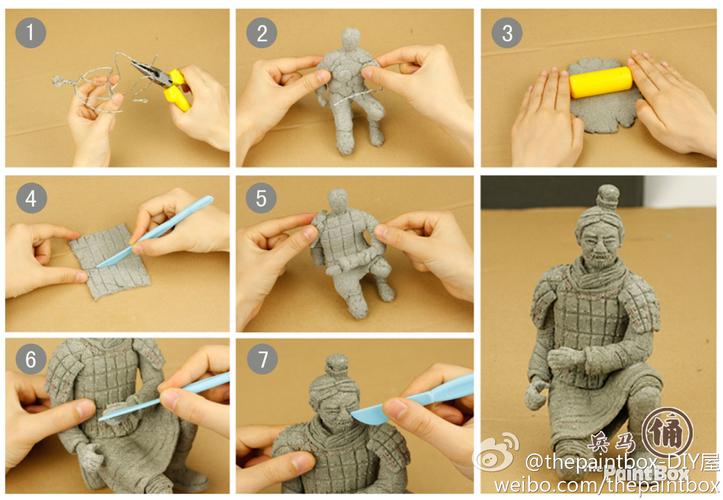
Are the Terracotta Warriors Made of Clay?
Guardians of an Emperor
The Terra-Cotta Army, a vast collection of life-sized terracotta figures, stands as a testament to the power and ambition of Qin Shi Huang, the first emperor of a unified China. Discovered in 1974 by farmers digging a well near Xi'an, this incredible find has captivated the world ever since. The army, consisting of thousands of soldiers, horses, and chariots, was buried alongside the emperor to protect him in the afterlife.
The Composition of the Terracotta Army: More Than Just Clay
While often referred to as being made of "clay," the Terracotta Army is actually crafted from a specific type of earthenware known as terracotta. Let's break down the difference:
1. Clay: The Basic Ingredient
Clay is a fine-grained natural material composed primarily of hydrous aluminum silicates. It's found in abundance throughout the world and has been used for pottery, building materials, and sculpture for millennia due to its malleability when wet and durability when fired.
2. Terracotta: Clay Transformed by Fire
Terracotta, meaning "baked earth" in Italian, is a type of ceramic material made from clay. The process involves shaping the clay into the desired form and then firing it at high temperatures. This firing process hardens the clay, making it durable and resistant to the elements.
3. The Terracotta Army's Unique Composition
The terracotta used to create the army wasn't simply any clay readily available. It came from the Wei River valley near the mausoleum, chosen for its fine texture and high plasticity. This particular clay, rich in minerals like quartz, feldspar, and mica, contributed to the strength and unique color of the figures.
The Making of the Terracotta Warriors
The creation of the Terracotta Army was a monumental undertaking, involving skilled artisans and laborers over several decades.
-
Molding the Figures: The figures were created using a combination of methods. While some smaller sections may have been molded, the larger body parts were made using a coil-building technique. In this method, long coils of clay were layered upon each other to build up the form.
-
Individualized Features: After the basic form was created, artisans meticulously carved individual features, expressions, hairstyles, and armor details, giving each warrior a unique appearance.
-
The Firing Process: Once complete, the figures underwent a crucial firing process in kilns. The high temperatures, likely reaching over 1800 degrees Fahrenheit (1000 degrees Celsius), transformed the malleable clay into the hard, durable terracotta we see today.
-
Painting and Detailing: After firing, the warriors were meticulously painted with bright pigments, adding another layer of realism. Sadly, much of this paint has flaked off over the centuries, but traces remain, revealing the vibrant colors that once adorned the army.
The Terracotta Army: A Legacy in Terracotta
The Terracotta Army stands as a testament not only to the ambition of an emperor but also to the artistry and skill of the craftsmen who brought this vision to life. The use of terracotta, a readily available and durable material, allowed for the creation of a vast and detailed army that has endured for over two millennia. The Terracotta Army continues to awe and inspire, reminding us of the ingenuity and creativity of our ancestors.
FAQs
Q1: Why was the Terracotta Army buried with the emperor?
A: In ancient Chinese belief, the afterlife mirrored the earthly realm. The emperor's tomb and the Terracotta Army were meant to provide him with everything he needed—including protection and servants—in the afterlife.
Q2: How many warriors are in the Terracotta Army?
A: It is estimated that over 8,000 life-sized terracotta warriors, along with horses and chariots, are buried within the three pits surrounding the emperor's tomb.
Q3: Can you visit the Terracotta Army today?
A: Yes, the Terracotta Army is a UNESCO World Heritage site and a popular tourist destination. Visitors can marvel at the figures in their excavated pits and learn about their history at the museum located on the site.